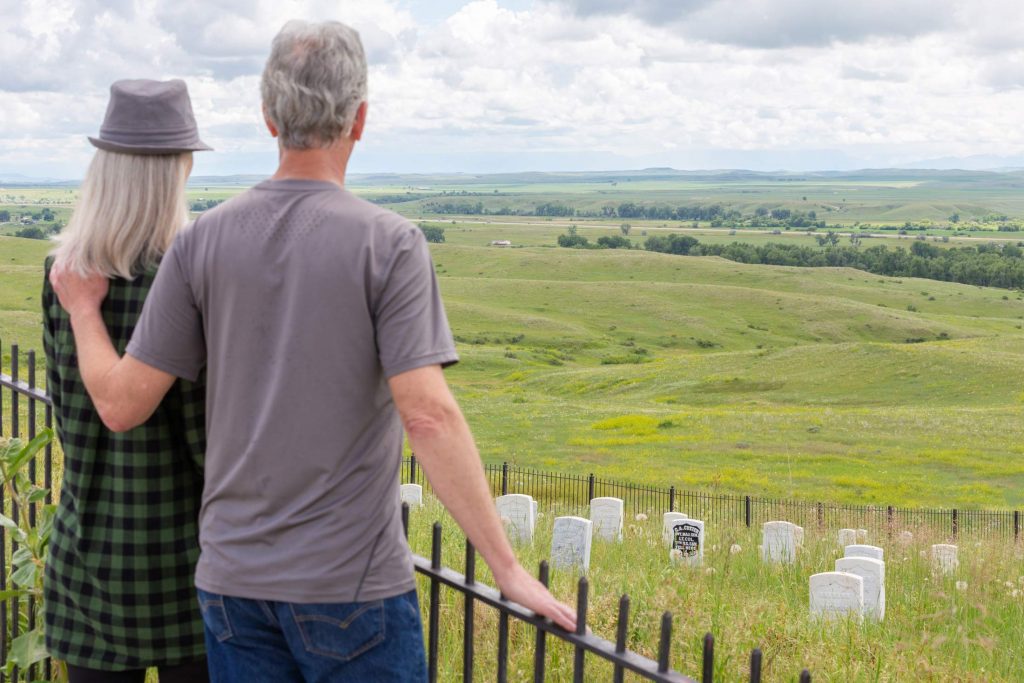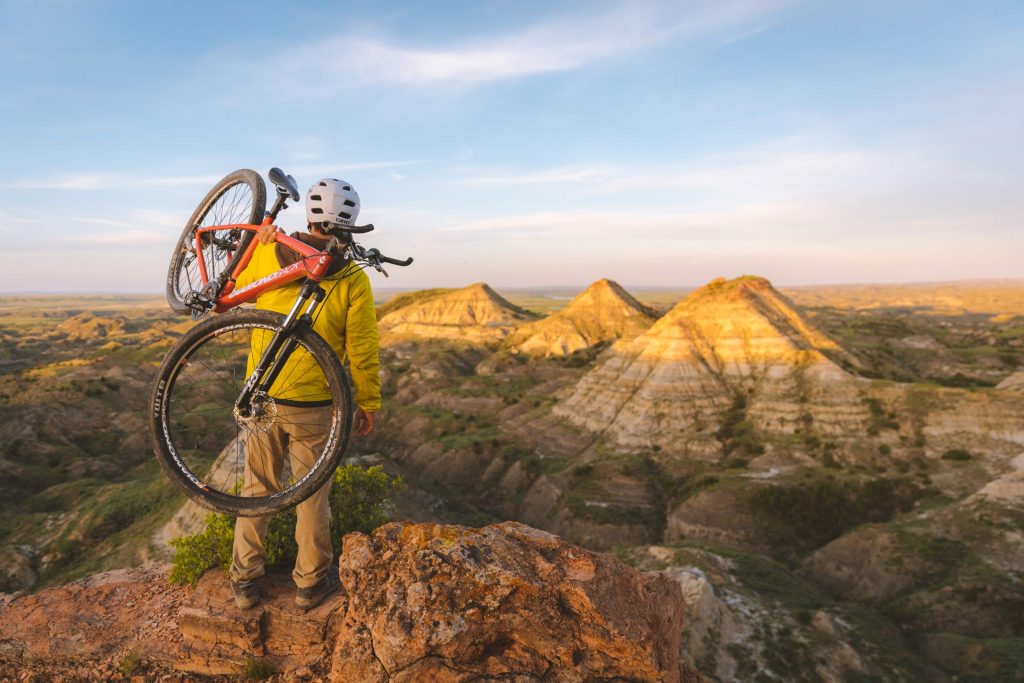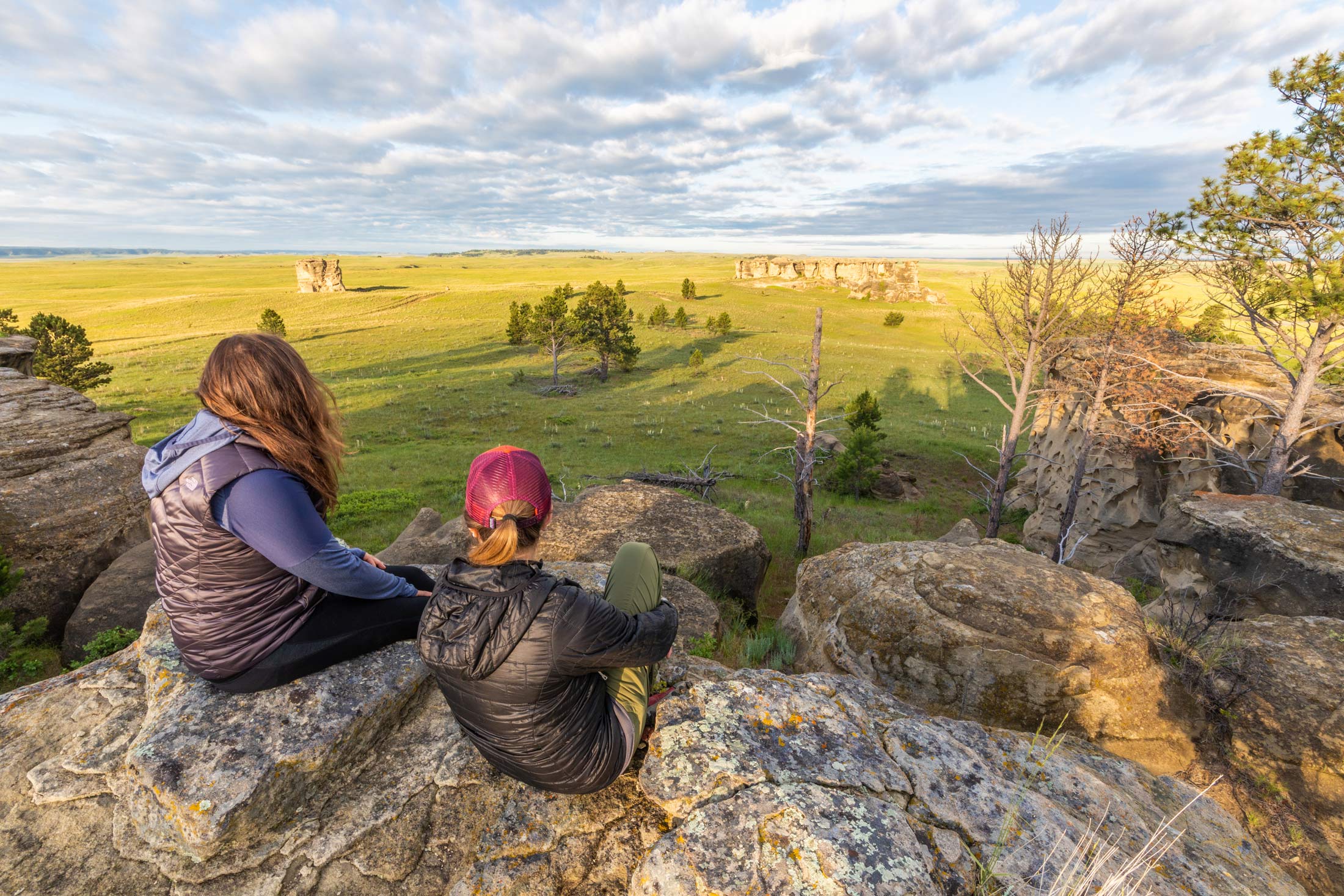Southeast Montana’s Big, Open Spaces are the Perfect Place for an Escape: Part II
We all know Montana is big, and the space Southeast Montana covers is a big portion of the state. In Southeast Montana’s Big Open Spaces are the Perfect Place for an Escape: Part I , we told you about the public recreational land, national forest land, lakes, rivers and fishing access sites. Here, learn about national monuments, historical sites, state parks and biking trails across Southeast Montana.
Know before you go: Seasonal closures can affect access at some locations—it's best to check status before you hit the road.
National Monuments
Southeast Montana is home to two national monuments, including the Little Bighorn Battlefield National Monument—site of both the Custer and Reno-Benteen battlefields. This monument, which also features the moving Indian Memorial, commemorates the 1876 conflict between the U.S. 7th Cavalry Regiment and the Lakota Sioux and Northern Cheyenne, who fought to defend their homelands and way of life. Over the course of June 25–26, 1876, more than 260 soldiers—including Lt. Col. George Armstrong Custer—lost their lives. Today, the two battlefields are connected by a 4.5-mile self-guided driving tour, and the visitor center offers exhibits that help explain the events and strategies of the battle.
NOTE: The Little Bighorn Battlefield National Monument is undergoing a major renovation. For the most up-to-date information related to visitation and construction progress, see nps.gov/libi.
Across the region, visitors can follow sections of the Corps of Discovery’s route as they mapped the western territories. Pompeys Pillar National Monument protects the only remaining on-site physical evidence of the Lewis and Clark Expedition: Captain William Clark’s signature, carved into the sandstone on July 25, 1806. About 25 miles east of Billings, the interpretive center traces Clark’s journey down the Yellowstone River Valley and the landscapes he documented along the way.

Southeast Montana is rich with places that bring history to life. Explore more than 20 documented historic sites, including Camp 21, one of the Corps of Discovery’s 1806 camps; General Custer’s 1876 campsite; and the Historic Bell Bridge in Glendive, now reserved for pedestrians and cyclists for a more intimate view of the Yellowstone River.
Historic Sites Across the Region
Major landmarks such as Little Bighorn Battlefield National Monument and Rosebud Battlefield State Park provide deeper insight into the pivotal events that shaped this region and the nation.
Montana’s historical roots run deep. Hear about dinosaurs who wandered the land millions of years ago. Trace the path of Lewis and Clark’s journey through Montana as they worked to map out the western territory. Learn about the Native Americans who have lived on the land for centuries, their fight to protect their homes and how their heritage and culture remain strong.
Find a full list of historical sites here.

State Parks
Southeast Montana is home to eight of Montana’s 55 state parks, each offering a different way to experience the region’s landscapes, history and wildlife.
Makoshika State Park in Glendive—the largest state park in Montana—is known for the dinosaur fossils discovered in its dramatic badlands terrain. Miles of hiking and biking trails wind through hoodoos and ridgelines, and the campground includes a teepee framework at Site 15. Visitors can play a round on the disc golf course, watch for deer and raptors along the cliffs, or join the summer Paleo Adventures programs held on select Saturdays.
Chief Plenty Coups State Park honors the life and legacy of Chief Plenty Coups, the last traditional chief of the Crow Nation. His preserved log home, store and the sacred spring offer insight into his leadership during a period of profound cultural change. The shaded tables along Pryor Creek make it an inviting spot for a picnic and wildlife watching.
In Billings, Lake Elmo State Park is a family favorite, featuring a sandy beach for swimming, a trail encircling the lake and plenty of space for paddleboarding, kayaking and fishing from Roger’s Pier. Birding is excellent throughout the seasons, and the interpretive center provides a deeper look at the area’s natural history.
At Medicine Rocks State Park, visitors are met with towering sandstone formations weathered into arches, pillars and alcoves. Ancient petroglyphs and inscriptions add a layer of cultural history to the surreal landscape. Primitive campsites and quiet trails offer a peaceful place to observe mule deer, antelope, Woodhouse’s toads and sharp-tailed grouse.
Pictograph Cave State Park preserves rock art created by prehistoric peoples thousands of years ago. More than 30,000 artifacts have been recovered from the caves, offering a window into the many cultures that once moved through this region. Follow the short interpretive trail to see the pictographs—most visible after rain or snow, when moisture enriches the pigment.
Looking for a riverside retreat? Pirogue Island State Park near Miles City features nearly three miles of trails shaded by cottonwoods and excellent bird watching along the Yellowstone River. In warm weather, visitors can wade across shallow side channels to explore more of the island and watch for wildlife along the banks.
Rosebud Battlefield State Park offers a sweeping view of the landscape where, on June 17, 1876, U.S. forces clashed with Northern Cheyenne and Lakota warriors—just eight days before the Battle of Little Bighorn. The open terrain invites exploration: wander the rolling hills, follow interpretive signs and take in the ridges and prairies that shaped the battle.

Biking Trails
You’ll find more than 70 miles of formal biking trails in Southeast Montana. Billings boasts a system with nearly 50 miles of paved/hard-surface trails, as well as dozens of miles of on-street riding. For the more experienced riders, the Zimmerman Park Trail offers spectacular views of Billings near the Rims, while the Marathon Loop will take you on a ride around the entire city.
The Acton Recreation Area north of Billings has its own set of trails including the Heag Road or Rollercoaster Trail for bikers. Looking for something a little more difficult? The Calypso Trail running through the Terry Badlands Wilderness Study Area offers beautiful scenery and a more difficult dirt road to follow. Make sure to stay on the trail, as off-roading isn’t allowed. Or, take your pick from the different paved trails throughout Makoshika State Park.
Find a full list of trails here.
If you’re keeping a running tally, the numbers add up fast. Southeast Montana includes more than 500,000 acres of National Forest land, nearly 70 miles of designated biking trails, and over 30 fishing access sites across five major rivers and seven lakes. You’ll also find two national monuments, 15 historic sites, eight state parks covering more than 16,000 acres, and roughly 40,000 acres of BLM land set aside for recreation.
Even if you’ve already explored a few of these places, there’s always more waiting just around the bend.
More from our blog:


